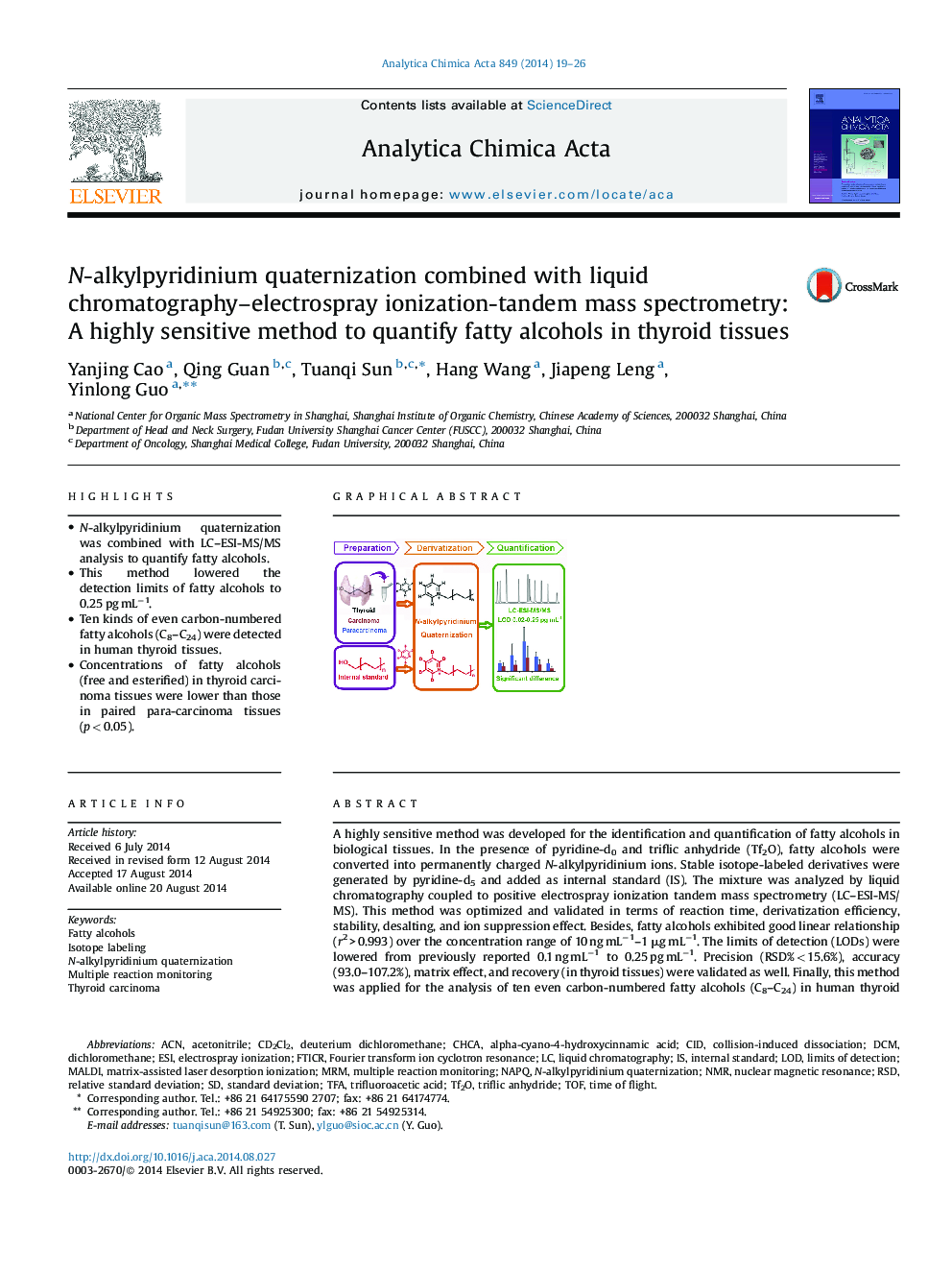| کد مقاله | کد نشریه | سال انتشار | مقاله انگلیسی | نسخه تمام متن |
|---|---|---|---|---|
| 1164243 | 1490983 | 2014 | 8 صفحه PDF | دانلود رایگان |

• N-alkylpyridinium quaternization was combined with LC–ESI-MS/MS analysis to quantify fatty alcohols.
• This method lowered the detection limits of fatty alcohols to 0.25 pg mL−1.
• Ten kinds of even carbon-numbered fatty alcohols (C8–C24) were detected in human thyroid tissues.
• Concentrations of fatty alcohols (free and esterified) in thyroid carcinoma tissues were lower than those in paired para-carcinoma tissues (p < 0.05).
A highly sensitive method was developed for the identification and quantification of fatty alcohols in biological tissues. In the presence of pyridine-d0 and triflic anhydride (Tf2O), fatty alcohols were converted into permanently charged N-alkylpyridinium ions. Stable isotope-labeled derivatives were generated by pyridine-d5 and added as internal standard (IS). The mixture was analyzed by liquid chromatography coupled to positive electrospray ionization tandem mass spectrometry (LC–ESI-MS/MS). This method was optimized and validated in terms of reaction time, derivatization efficiency, stability, desalting, and ion suppression effect. Besides, fatty alcohols exhibited good linear relationship (r2 > 0.993) over the concentration range of 10 ng mL−1–1 μg mL−1. The limits of detection (LODs) were lowered from previously reported 0.1 ng mL−1 to 0.25 pg mL−1. Precision (RSD% < 15.6%), accuracy (93.0–107.2%), matrix effect, and recovery (in thyroid tissues) were validated as well. Finally, this method was applied for the analysis of ten even carbon-numbered fatty alcohols (C8–C24) in human thyroid carcinoma and para-carcinoma tissues, revealing a significant decrease of fatty alcohols (free and esterified) in thyroid carcinoma tissues (p < 0.05).
Figure optionsDownload as PowerPoint slide
Journal: Analytica Chimica Acta - Volume 849, 7 November 2014, Pages 19–26